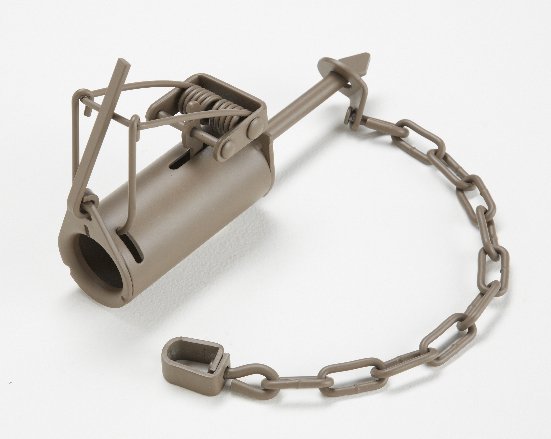After a more than a three-decade ban, leg-hold traps are back in New Jersey. Trapping season began Tuesday.
Animal welfare organizations unsuccessfully challenged approval of the new device in court and are hoping for a legislative ban. The New Jersey Assembly approved a ban on the devices late last month; the Senate has yet to act.
“The Fish and Game Council’s regulation is cruel and violates the law and legislative intent. We will continue fighting for the legislature to step in and overturn the rule by passing the resolution,” Jeff Tittel, director of the New Jersey Sierra Club, said in a statement.
The recently approved traps aren’t the exposed U-shaped traps traps that were in use when a court struck down their use in 1984. (Those sort of traps are permitted in Pennsylvania.)
The N.J. Fish and Game Council, which regulates hunting and fishing in the Garden State, last year approved the use of what is known as enclosed leg-hold traps.
The enclosed foot-hold traps feature a cylinder encapsulating the steel trigger mechanism. The enclosed traps are meant primarily for the trapping of raccoons and, to lesser extent, opossums.
- OTHER SOUTH JERSEY STORIES:
- A sea of suds washing over South Jersey
- Day drinking with Tara Nurin, Forbes.com's new beverage writer
- Defying heroin's fatal grip, first-responders rack up 'saves' with Narcan
The approval of the new design has riled animal welfare groups, though other organizations, including some wildlife veterinarian groups, have supported the new traps.
Supporters argue the widespread existence of rabies in raccoons and their predation of ground-nesting birds – woodcock, grouse and quail – and the eggs of those bird species warrant the new device.
Larry Hajna, a spokesman for the state’s Department of Environmental Protection, said raccoons account for 72 percent of the rabies cases in New Jersey wildlife.
Since the new traps were approved, nearly 300 additional new trappers – now 806 – have been licensed in Jersey, Hajna added, calling the traps “selective and efficient.”
He said the dimensions of the trap's cylinder excludes most all other wildlife other than raccoons and just a very few larger opossums with enough leg length to reach the trigger.
The number of opossums caught has remained about the same since the traps were approved. But the take of raccoons has increased by more than 5,000, to 12,488 during the 2015-2016 trapping season, said Hajna.
Hajna said trapping raccoons is important given the lack of natural predators for the masked critters and the fact that raccoons flourish in urban, suburban and rural areas.
He declined comment on the Assembly vote and possible action by the N.J. Senate.
“We will continue our efforts to overturn this rule with a legislative veto,” Tittel said.
Requests for comment to the New Jersey Trappers Association and New Jersey Fur Harvesters were not immediately returned.

